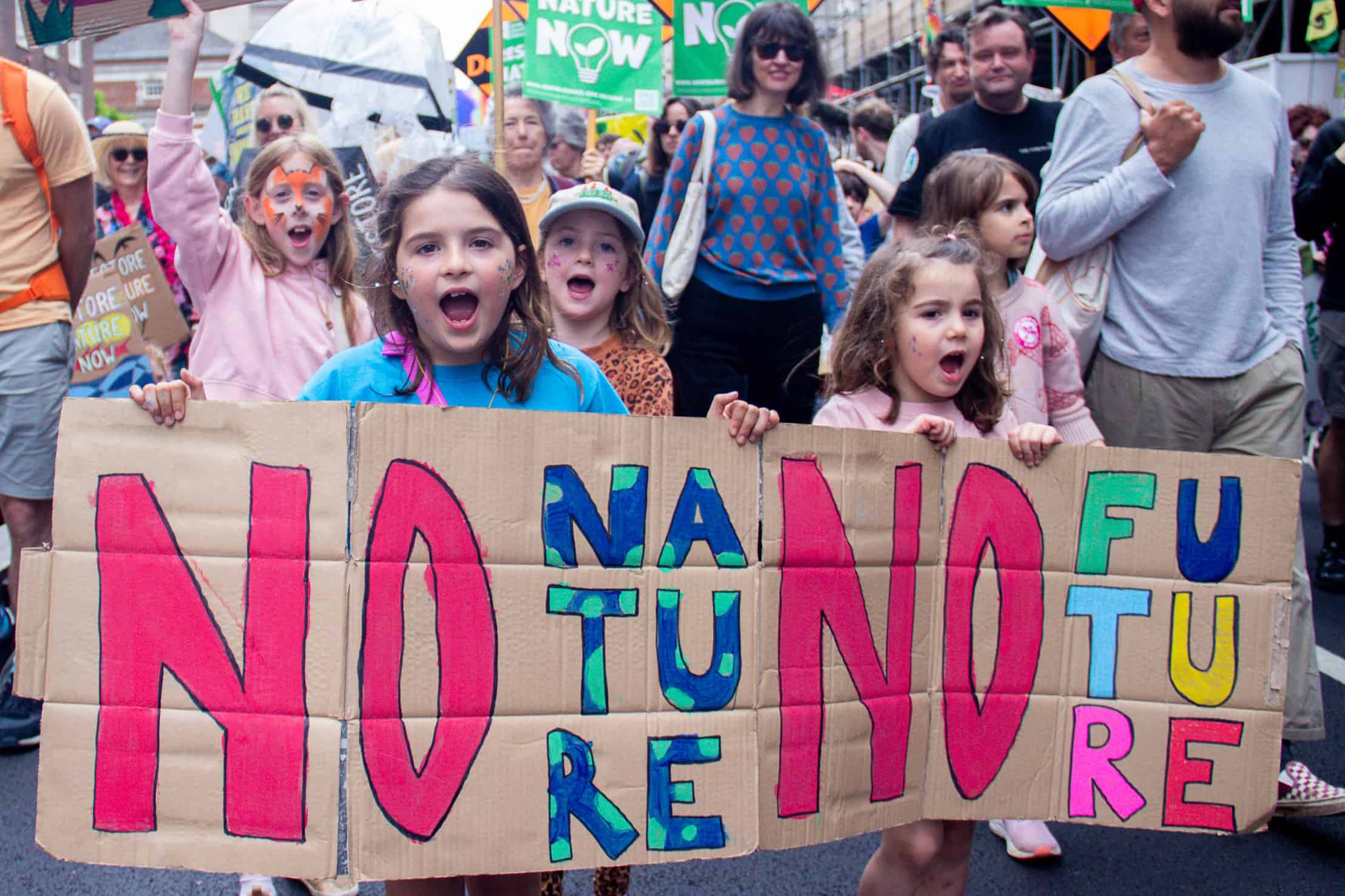At last, since the idea was first discussed in an informal UN meeting in 2002 and after 5 rounds of multinational negotiations, the text of a United Nations treaty to protect biodiversity in the high seas was agreed late on Saturday March 4th in New York.
“We praise countries for seeking compromises, putting aside differences and delivering a treaty that will let us protect the oceans, build our resilience to climate change and safeguard the lives and livelihoods of billions of people,” said Greenpeace’s Dr. Laura Meller.
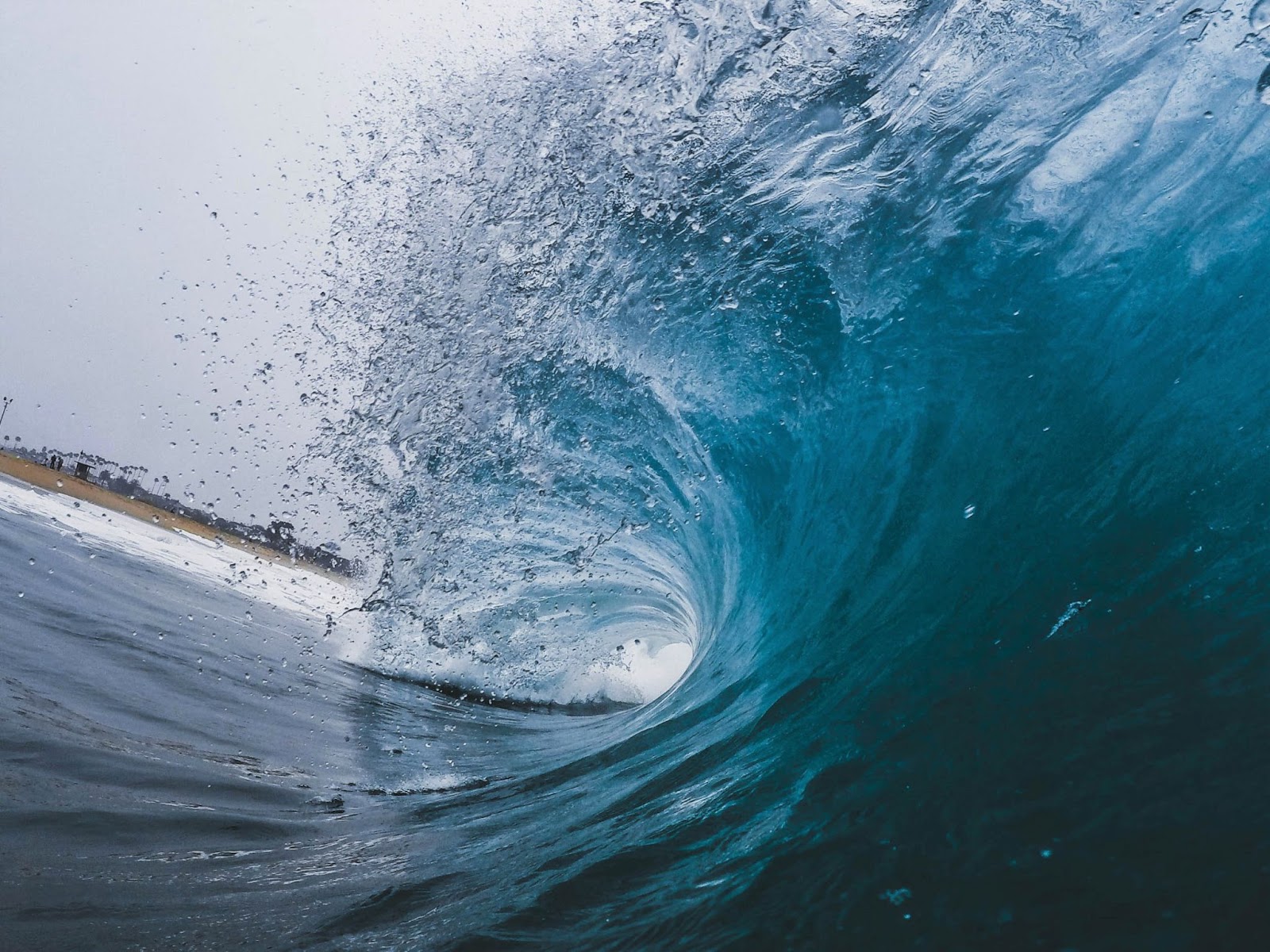
Thanks to Jeremy Bishop for the image. Unsplash
The high seas are the ocean waters which lie beyond the national boundaries of coastal states. As a vast stateless region, it is especially vulnerable to uncontrolled and damaging industries like commercial fishing and deep-sea mining. Elements of the treaty include setting up a legal framework to create marine protected areas, setting rules on environmental impact assessments (EIAs) and bringing a fairer distribution between richer and poorer nations of the benefits from the commercialization of substances derived from marine genetic resources (such as from corals, sponges, seaweeds, and bacteria for cosmetic and pharmaceutical products etc.).
For representatives of 193 countries to reach agreement is a major achievement, but the next potential hurdle is delay. Before the Treaty can do its job, countries must adopt and ratify it. Liz Karan, director of Pew’s ocean governance project urged governments to “ensure the agreement is adopted and rapidly enters into force and is effectively implemented to safeguard high seas biodiversity.”
Why is the UN High Seas Treaty so important?
Oceans are Earth’s unsung life support system. No matter where you are, or what you are, they make all life possible. And as the high seas cover 64 percent of the global ocean, safeguarding them effectively is vital to us all. They are critical to sustaining the world's biodiversity both on land and in the water, and they enable human societies to thrive. But what exactly do oceans do for the world? The answer is, much more than you probably think:
Air to breathe and carbon to sink
Phytoplankton are microscopic free-floating plants drifting in the world’s oceans, lakes and rivers. In their billions and trillions, making food through photosynthesis (using sunlight energy to convert carbon dioxide and water into glucose) they produce huge quantities of oxygen as a by-product. Together with seaweeds and sea grasses, phytoplankton generate between 50 and 80 percent of Earth’s oxygen. And there’s a double bonus, because photosynthesis on so vast a scale also takes in a massive amount of carbon dioxide from the atmosphere. NASA estimates that over 100 million tons of carbon dioxide is drawn into the ocean by marine phytoplankton – every day. Marine habitats, such as mangroves and tidal salt-marshes also play a vital role in mitigating impacts of the climate crisis, with their superb carbon capturing capacity.
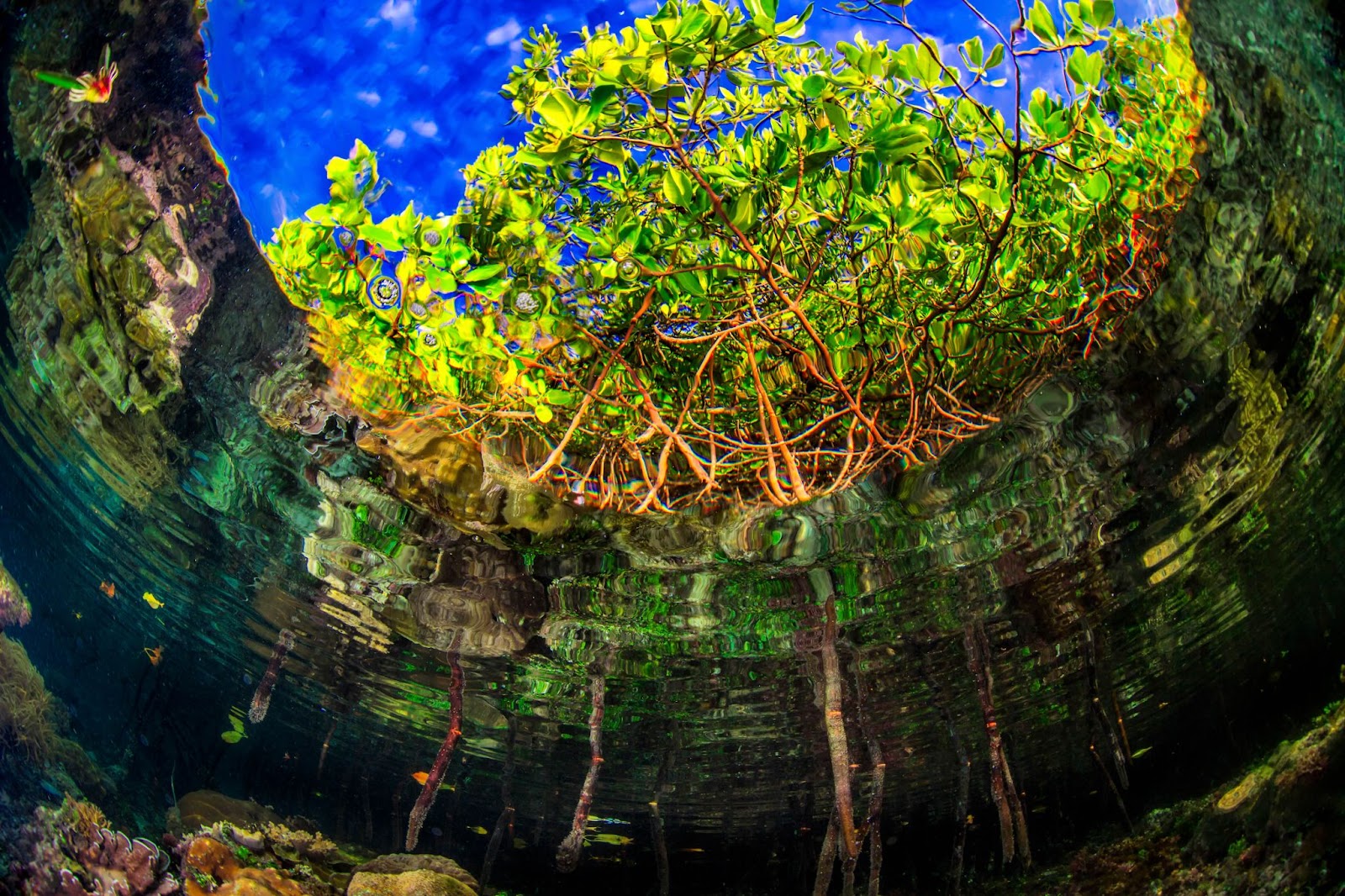
Thanks to Beth Watson and the Ocean Image Bank for the image
Habitable climates and fresh water
Oceans keep us cool. Water evaporates from the surface, cooling seas and enabling them to mop up atmospheric heat. Since 1955 oceans have absorbed over 90 percent of the excess heat trapped by greenhouse gas emissions, shielding us from more severe effects of a changing climate. Ocean currents regulate global climate systems, redistributing the sun’s heat and moisture around the planet, moderating otherwise extreme temperatures and keeping the land liveable for plants and animals alike. Oceans also drive the planetary water cycle – the continuous flow of water evaporation, which leads to cloud-formation, and in turn rain – on to land, rivers and the sea.
An incalculable wealth of biodiversity
The variety and quantity of plant and animal species in the sea is almost beyond comprehension – comprising up to 80 percent of all life on Earth. Perhaps more extraordinary is that scientists estimate 91 percent of ocean species have yet to be classified.
On land, habitable space is a relatively thin layer of possibility; in the ocean it is much greater. Space for life stretches down from the water’s surface to the seafloor, which may be several thousand metres below – that means roughly 98 percent of Earth’s living space is either on the waves or beneath them. This helps explain the untold variety of marine life. It ranges from microscopic bacteria, to a blue whale weighing 200 tons; from a frigate bird gliding two miles above the sea’s surface to the remarkable dumbo octopus dancing in the depths, five miles below it. We are spellbound by the beauty, the wonder and the drama of life in the sea.
Food and employment
As well as billions of marine animals, oceans feed many land-living species, such as birds, bears and wolves. The World Wildlife Fund estimates that over three billion people also depend on marine fish and shellfish as their main source of protein, whether farmed or from wild-capture fisheries. There are several more million of us who may not be reliant on seafood, but eat it regularly nevertheless. And roughly two hundred million people are directly or indirectly employed in fisheries, sustaining thousands of coastal communities worldwide.
Some cultures have long included marine plants in their diet (seaweed in Japan for instance). More recently, the rising demand for marine plants (used in sushi, sauces, and salads) has made seaweed farming the fastest growing form of aquaculture. Seaweeds are very nutritious and they take up a large amount of carbon dioxide as they grow, so they benefit both whoever enjoys seaweed cuisine and the environment.
Well-being
Oceans improve our physical and mental health. Gazing over a flickering sea from a cliff top, or lying in the sand listening to the rhythm of the waves, is calming and reassuring. Being in that big blue and grey space of sea and sky can lift our mood like nothing else.
Over the world, the beach is also our most popular holiday destination and the sea our biggest playground – to swim, to dive, surf, and sail – to have fun, keep fit and connect with the natural world.
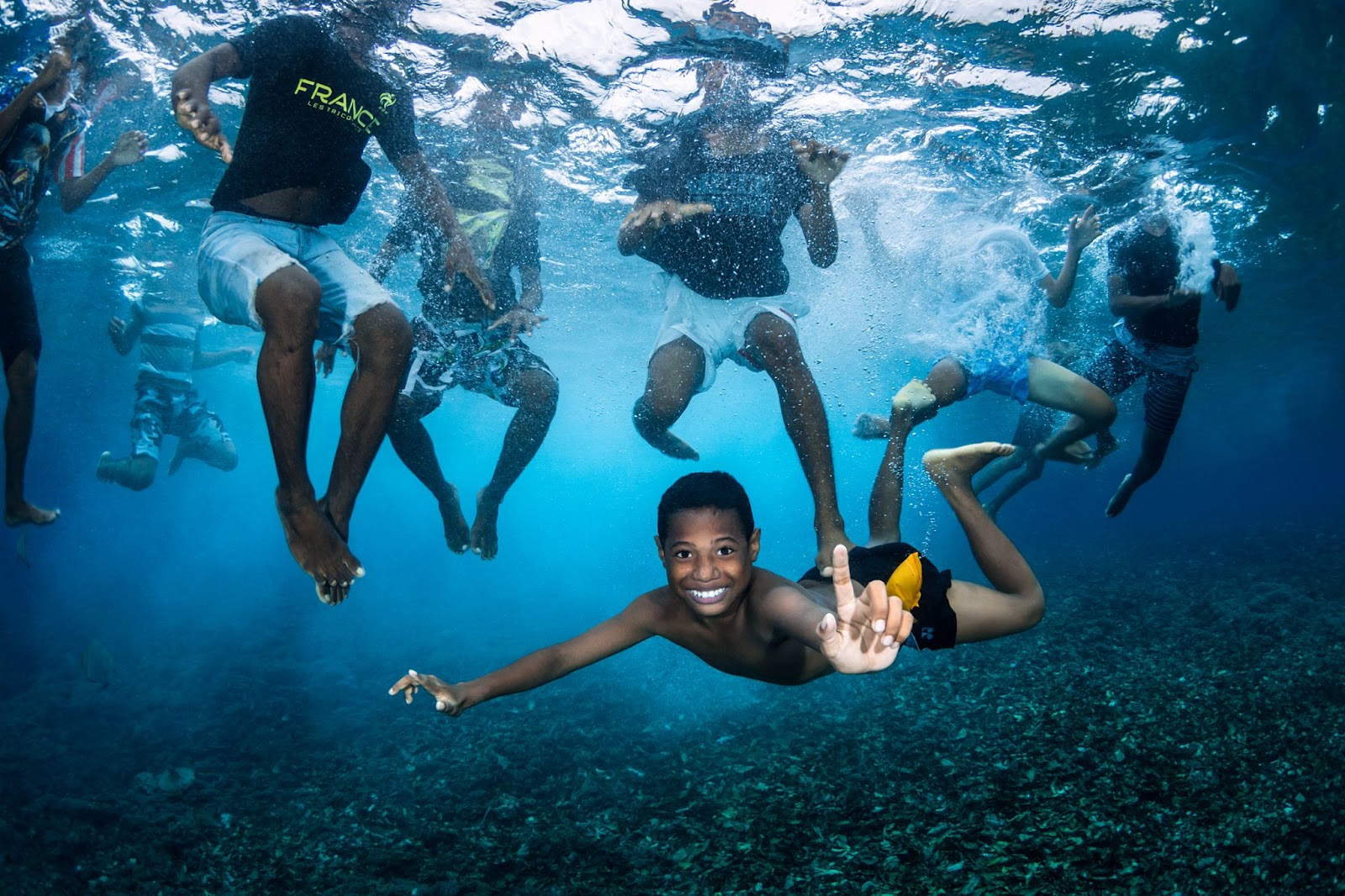
Thanks to Fabrice Dudenhofer and the Ocean Image Bank for the image
Energy
As well as all that oceans do now, if we’re smart they can do even more. The global ocean is the largest store of power on Earth. Harnessing just some of that power can yield an everlasting, clean supply of energy – and free us from our fossil-fuelled world.
Presently, marine renewable energy comes mainly from offshore wind, tides and waves. Scientists calculate that wave power alone could supply at least twice the global demand for electricity. Newer technologies are gaining momentum too. Ocean thermal energy conversion (OTEC) for instance, captures energy from temperature differences between cooler deep water and warmer surface waters.
The world’s oceans will be healthier (as will we be) when a clean-energy-based economy replaces one powered by fossil fuels. And it could be kismet that the untapped forces of the oceans themselves can speed up that transition. They can help us to help them.
In return, what do we do?
Despite being completely dependent on healthy oceans to survive, modern societies have been emptying seas of wildlife, polluting waters, destroying underwater and coastal habitats, and weakening Earth’s natural systems for decades.
The list of human-driven threats to the world’s oceans is long and overwhelming. Broadly they fall into two camps; those caused by what we do on land, and those by what we do at sea.
All kinds of pollutants enter the sea continually; industrial discharges, agricultural run-off, sewage, discarded fishing gear, and plastic waste washed in from landfill and drainage systems, left on beaches, or dumped overboard. Industrial fishing has exhausted seas of many fish species, frequently demolishing underwater habitats and killing huge numbers of non-target wildlife in the process.
The shipping, construction, oil, gas and mining industries pollute waters and cause serious disturbance to marine life. Invasive species are transported (mainly by ships) beyond their native range, such as the Green crab and Zebra mussel, and can be devastating for the ecosystems they invade. These industries, together with naval vessels using sonar, create underwater noise pollution, which is particularly harmful to whales, porpoises and dolphins.
The impacts of fossil fuel emissions are becoming increasingly evident each year that passes. Higher temperatures are melting-ice caps, raising sea-levels, and causing stress to wildlife – many species showing reduced fertility or driven to change their migratory and feeding patterns. Excess atmospheric carbon dioxide is making sea water more acidic, which is bad news for marine life. The full effects of ocean acidification are uncertain, but it is known to inhibit the growth of the shells and skeletons of many species, including hard corals. It could have drastic consequences for whole ecosystems, for biodiversity, and even for the planet’s primary life-support systems.
Coral reefs have the greatest diversity of species of all Earth’s habitats, but they face multiple threats; from destructive fishing (such as trawling and dynamite fishing), pollution, acidification, and rising sea temperatures, which lead to coral bleaching.
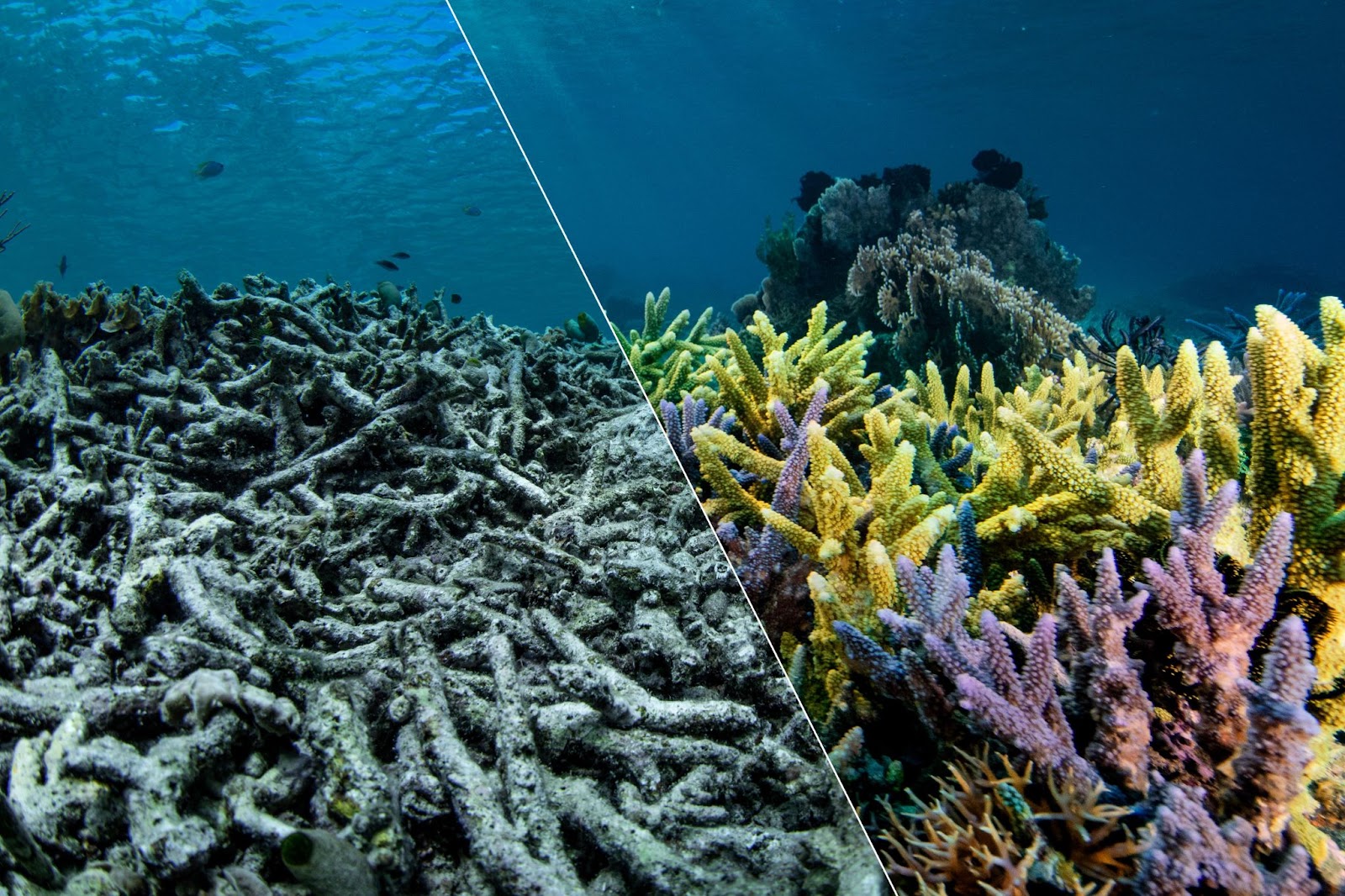
Thanks to Martin Colognoli and the Ocean Image Bank for the image
Divided We Fall
In the fight to tackle the climate crisis, the oceans are our greatest ally. You’d be a fool to turn on your comrade-in-arms as you marched towards the battle-front; to kick him to the ground and still expect him to be your defender – and yet we’ve been doing the equivalent to the world’s oceans since the industrial age began (and to a lesser degree, even before).
Robust and resilient oceans, with clean waters brimming with wildlife can absorb more heat and carbon dioxide, can produce more oxygen, provide more food and employment, and safer places for people to live, than if they are weakened, degraded and depleted of life.
The newly negotiated High Seas Treaty is being described as a ‘turning point’ and a ‘landmark moment for the ocean’. That could be true – time will tell – it is certainly less than perfect. Conservationists wanted more. For instance, the bodies currently regulating fisheries, shipping and deep-sea mining won’t have to undertake EIAs as detailed in the treaty text, which could seriously undermine its potential to protect wildlife in the high seas. But it was thought better to have a flawed Treaty than none at all.
Imperfection aside, after such a prolonged process, so many countries finally agreeing on a plan to protect high seas biodiversity is good news.
As Dr Meller succinctly put it,
“This is a historic day for conservation and a sign that in a divided world, protecting nature and people can triumph over geopolitics”.
What you can do for the oceans
Most of us know about plastic pollution in the sea and the importance of avoiding single-use plastics. Here are four other actions to take.
- Support a marine conservation organisation. Some specialise in a particular aspect of conservation, such as the Olive Ridley Project protecting turtles and the Mangrove Action Project restoring mangrove forests. Others have a broader scope, including influencing government policy, such as Surfers Against Sewage in the UK, or like Sea Shepherd, taking direct action on the ocean.
- Learn more about the sea and marine life, about conservation projects, and why healthy oceans are so important – be inspired, motivated, talk to friends and family and get them interested too.
- Read labels before buying products. Most sunscreen creams, for example, contain chemicals which kill marine life. They include: Oxybenzone; Octinoxate; Octocrylene; PABA (Aminobenzoic Acid); Enzacamene; Octisalate; Homosalate; and Avobenzone. Use a ‘reef-safe’ cream, or cover-up and stay in the shade.
- Cut out farmed salmon and warm-water farmed prawns and shrimp, because of the serious environmental damage caused by their production.
Deb Rowan Wright is an independent researcher and writer on marine policy. Her book, Future Sea: How to rescue and protect the world’s oceans questions the reasoning behind current approaches to ocean conservation and presents a radical alternative.


